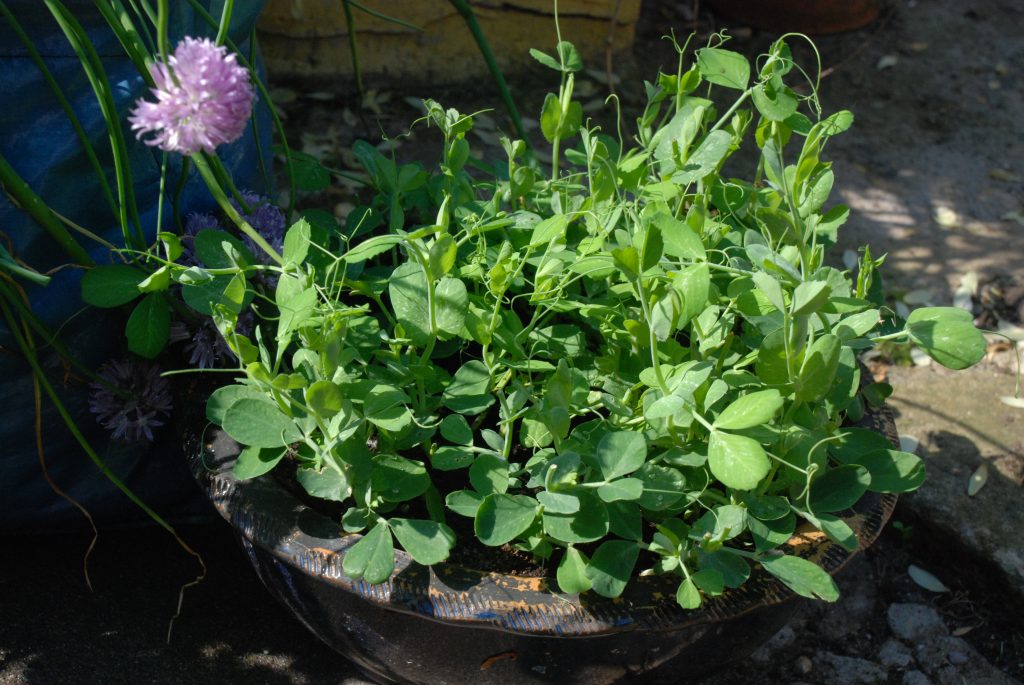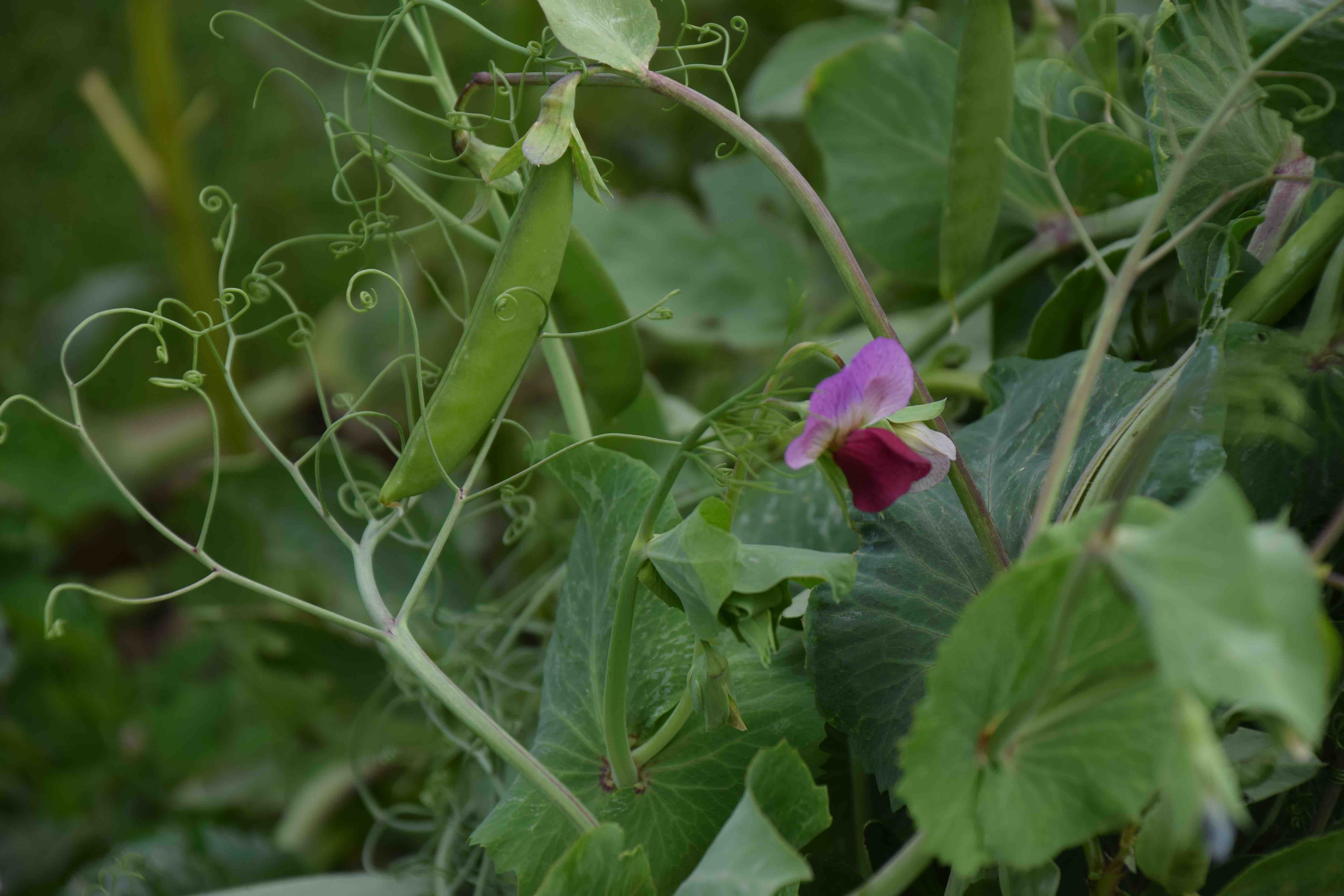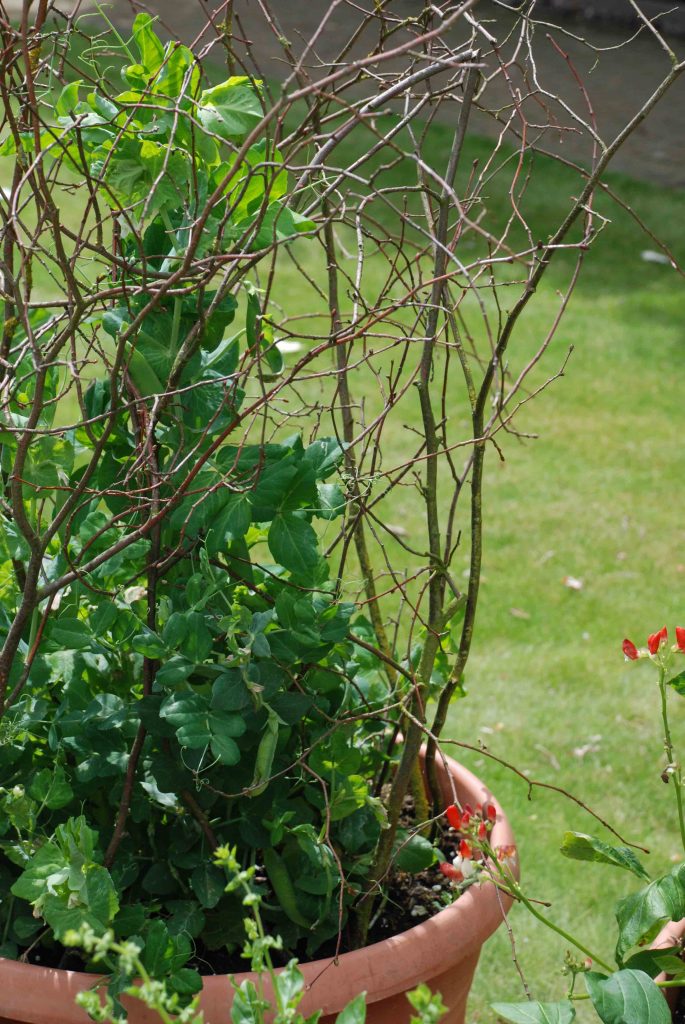Although the weather is not always springlike at the moment, just a few days can bring a huge difference and spring is upon us even if we can’t quite believe it at the moment.
Many of us want to grow some fresh vegetables and many are easy to grow to supplement our meals so, over the next few weeks, I will tell you how to grow some of the best and easiest, starting with peas.
I have to confess that I never buy fresh peas in their pods. Peas have to be picked and eaten the peak of their sweetness and those wrinkled pods in the shops just don’t taste good – they have been picked too long ago. I don’t buy a lot of frozen veg but frozen peas are better than fresh peas bought in shops. I am not even sure that peas are worth growing in a small garden unless you really like peas and the pleasure of popping the pods and munching on delicate, sweet peas as you walk around the garden. But mange tout and snap peas, the ones where you eat the pods, are a different matter and I think are well worth growing. In addition, in shops they are usually grown in far-away lands and flown here across thousands of miles – quite ridiculous! And pea shoots, which are simple to grow and brighten up any plain salad, are definitely worth growing.
Pea shoots

Starting with something anyone can grow, pea shoots are delicious and quick to grow. All you need is a pot, some compost and some pea seeds. You can use any container that has drainage holes and it can be quite shallow: the pot above is only 10cm (4in) deep. Fill the container with multipurpose compost to within 2cm (1in) of the top. Then sow the seeds quite thickly (about 1cm – 1/2in apart) and then cover with 1-2cm (1/2in-1in) of compost. Water well and wait. You can keep the pot in a cold greenhouse, poly tunnel or leave it outside on the patio – peas will tolerate light frosts. Depending on the temperature, shoots should appear in one to two weeks.
You can use any variety of pea to grow pea shoots so buy the cheapest variety with the most seeds in the packet. You can sow once a month throughout summer and into autumn if you can protect the plants from cold so you can produce crops right into winter.
When the shoots are about 10cm (4in) high, cut them off, leaving at least one leaf at the base and enjoy. Keep watering and the plants will produce a second flush of shoots in a few weeks. These can be harvested and then tip the compost and plants on the compost heap. There is no need to feed the plants, just water regularly.
Of course you need to prevent slugs from eating the shoots and mice and pigeons like peas too, but growing in a pot reduces this problem.
Mangetout peas

Mangetout peas are usually tall-growing and need some sort of support. If you can get twigs, these are ideal, but plastic netting is suitable too. Mangetout peas crop for an extended time so one sowing will provide pickings for a month or so. You can sow them in the soil or in pots. If sowing outside use a spade to remove a trench about 2cm (1in) deep and 15cm (6in) wide – the width of the spade. Sow the seeds in this, about 5cm (2in) apart and cover with soil and water. As soon as the shoots appear, push in the twigs. This will prevent pigeons from attacking the shoots. You can sow from now till late June. Every flower produces a pod. If you can bear to reduce the crop then the flowers are edible too. Keep the plants watered in dry periods.
Peas are useful to grow because their roots harbour bacteria that harness nitrogen from the air and add it to the soil, enriching the soil for later crops. An early pea crop will enrich the soil for a later crop of leafy veg like cabbages or lettuce.
You can grow peas in pots too.

Because the pea plants will be tall (up to 1.5m – 5ft) make sure the pot is good and deep and you have sticks for support. Sow the seeds about 5cm (2in) apart and cover with compost. Multipurpose compost is fine but you will need to feed the plants as soon as they start to bloom. Any general liquid fertiliser is suitable. After the plants have cropped – and they are very ugly when they die – pull them up and use the compost for a second crop such as salad leaves, sown in August.
Other veg to sow now:
Lettuce, carrots, beetroot, spinach, French beans, cabbage, calabrese and sprouts.
Next week: French Beans